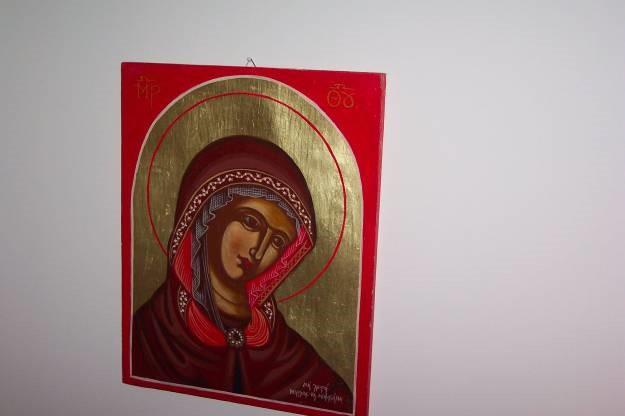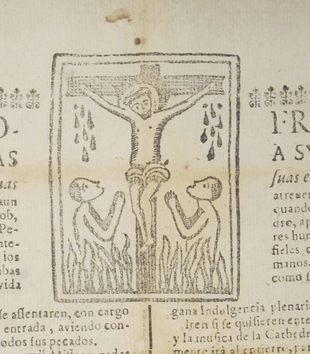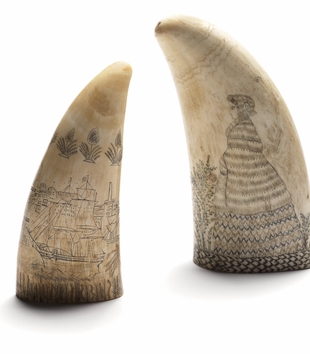Icons move. They cross national borders and traditional boundaries. They show up in the least expected places. No matter their locations, whether in a traditional Orthodox setting or, like this one, transplanted from Greece to the home of a Protestant believer in America, icons are continuously marked and re-marked.
In Greece, the Orthodox tradition prescribes acceptable modes of sensory engagement with the icon—kissing and touching it, kneeling and praying in front of it. However, as Orthodox believers pray in front of the icon, as they bring to it their particular requests and personal stories, as they hold, kiss, and feel the icon, they do more than affirm its sacred presence. They also expand and contract its normative range and intensity.
The sacred presence of this Greek Orthodox icon of Mary is marked in new ways in a new setting in America. This icon has been displaced from the Greek Orthodox Church and a Greek Orthodox home. Traveling from Greece, it has crossed not only the Atlantic Ocean, but also the boundary of the familiar. Even though in its new home it has joined two other icons—of Jesus and the Archangel Michael—it has been uprooted from a common matrix of Orthodox worship. It is no longer touched or kissed. No one prays in front of it. Treated in this way, it, nevertheless, does not cease being an icon. Rather, its displacement invites the icon’s new owner, Tina, to sensorially mark its sacred presence in her own way.
I interviewed Tina in the spring of 2011. In one of my conversations with that lively 51 year-old native of North Carolina, who worked as a teacher and attended a local Protestant church, she described her icon of Mary (painted by a close friend from Corfu), along with her icons of Jesus and Archangel Michael (painted by her brother-in-law), as a reminder of her husband’s Greek roots. She emphasized that the icons represent "a sense of identity and heritage for our family as Greek as well as American." This icon does more than just create a connection across space, between Greece and America, and time, between this mixed-heritage family and earlier generations. In our conversation about the icons, Tina also said that they create "a sense that we are not alone in the house or in the world" and that “the icon of Mary is particularly loving, almost conversational." Though the owner makes no physical contact with this icon, there is still a sensory connection. As Tina performs ordinary domestic activities in the presence of the icon—doing laundry, reading, or organizing events for her church—she reports that it becomes a "part of the background of daily life." Although the owner does not pray in front of this icon, there is a silent communication. As, in the presence of the icon, Tina thinks and worries—about students, relatives, and church members—it, in a covert way, becomes a listener. The icon becomes the visual backdrop for her private thoughts and worries. It becomes a part of her visual and emotional memory. This Marian icon, sensorially entangled into the intimate interactions of everyday life, allows the devotee to re-mark the range and intensity of its sacred presence as she sees fit in her mixed heritage home in the American South.
Notes
Imprint
10.22332/con.obj.2014.27
1. Elena Kravchenko, "Icon of Mary," Object Narrative, in Conversations: An Online Journal of the Center for the Study of Material and Visual Cultures of Religion (2014), doi:10.22332/con.obj.2014.27
Kravchenko, Elena. "Icon of Mary." Object Narrative. In Conversations: An Online Journal of the Center for the Study of Material and Visual Cultures of Religion (2014). doi:10.22332/con.obj.2014.27




